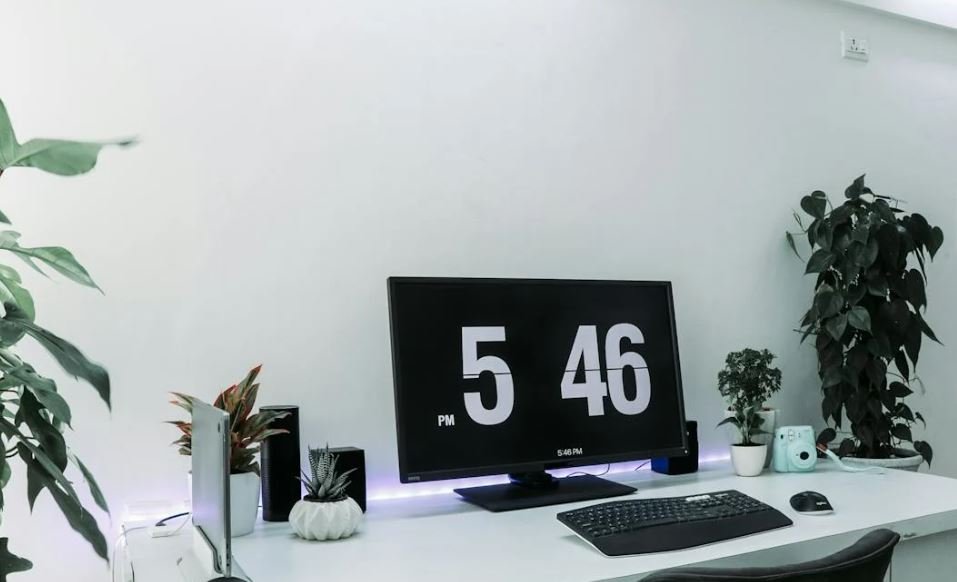Make GUI App with Python
Python is a powerful and versatile programming language that can be used to build a wide range of applications. One particularly useful aspect of Python is its ability to create Graphical User Interfaces (GUIs) that allow users to interact with programs in a visually appealing and user-friendly manner. In this article, we will explore how to make GUI apps with Python and showcase some key tips and techniques.
Key Takeaways
- Python allows you to create GUI apps that enhance user experience.
- There are various libraries available in Python for GUI development.
- Creating a GUI app involves designing the interface and adding functionality.
- Python’s simplicity and readability make it an ideal choice for GUI development.
Choosing the Right GUI Library
Python offers several libraries for GUI development, each with its own strengths and features. Some of the popular choices include:
- PyQt: A comprehensive set of Python bindings for the Qt application framework, providing a wide range of widgets and a professional look and feel.
- Tkinter: The standard Python interface to the Tk GUI toolkit, providing simplicity and ease of use.
- wxPython: A wrapper for the wxWidgets C++ library, offering native look and feel on various platforms.
Choosing the right GUI library depends on your specific requirements and familiarity with the toolkit.
Designing the GUI
When designing the GUI for your app, it is essential to consider the following aspects:
- **Layout**: Determine the arrangement, spacing, and alignment of components within the window.
- *Consistency*: Ensure a consistent visual appearance throughout the app.
- **Usability**: Make the interface intuitive and easy to navigate.
- *Accessibility*: Ensure that the app is accessible for individuals with disabilities.
| Widget | Description |
|---|---|
| Label | A simple text or image container. |
| Button | A clickable button that triggers an action. |
| Entry | A text entry field for user input. |
| Checkbutton | A toggleable button that represents a binary choice. |
Designing a visually appealing GUI with well-planned placement of widgets can greatly enhance the user experience.
Adding Functionality
Once the GUI layout is complete, it’s time to add functionality to your app. This involves defining event handlers to respond to user interactions and updating the interface accordingly. Some common examples include:
- Create a button click event handler that performs a task when the button is clicked.
- Develop a validation mechanism to ensure user input meets specific criteria.
- Implement a menu system for additional functionality.
| Library | Advantages | Disadvantages |
|---|---|---|
| PyQt | Rich set of widgets, professional look, excellent documentation. | Requires installation of Qt libraries, more complex for beginners. |
| Tkinter | Simple to use, included with Python, good for basic apps. | Less visually appealing, fewer advanced features. |
| wxPython | Native look and feel, extensive toolkit, good for cross-platform development. | Slightly steeper learning curve, slower performance in some cases. |
Quote of the day: “The best way to predict the future is to create it.” – Peter Drucker.
Putting It All Together
By combining the chosen GUI library, effective design principles, and added functionality, you can create impressive GUI apps using Python. Whether you are building simple utilities or complex software, Python’s versatility and extensive library support make it a great choice for GUI development.

Common Misconceptions
1. Python is only for data analysis and web development
Many people believe that Python is limited to data analysis and web development tasks. While Python is indeed popular in these domains, it is much more versatile. Here are three common misconceptions related to this:
- Python can be used for building desktop applications.
- Python supports game development with libraries like Pygame.
- Python can be used for scripting and automation tasks.
2. Building GUI Apps with Python is complex and time-consuming
Another common misconception is that building GUI applications with Python is difficult and time-consuming. However, with the availability of user-friendly libraries and frameworks, creating GUI apps in Python has become more accessible. Here are three relevant bullet points:
- Python provides libraries like Tkinter and PyQt for building GUI apps.
- Frameworks like Kivy and PySide provide additional tools and functionalities for GUI development.
- Python’s syntax is simple and readable, making GUI development easier.
3. Python GUI apps are not as performant as apps written in other languages
Some people believe that GUI apps written in Python may not be as performant as those written in other languages like C++ or Java. However, this misconception is often based on outdated information. Here are three relevant bullet points:
- Python’s performance has significantly improved over the years with the introduction of optimizations and just-in-time (JIT) compilation.
- Python can leverage external libraries written in lower-level languages like C to enhance performance in critical sections of an application.
- The choice of algorithms and data structures can impact an application’s performance more than the choice of programming language.
4. Python GUI apps lack a polished and professional look
Another misconception is that Python GUI apps lack the visual appeal and professional look that other languages provide. However, this is not true as Python offers several options for creating visually appealing GUIs. Here are three relevant bullet points:
- Python provides libraries like PyQT and wxPython that offer a wide range of customizable widgets and styling options.
- There are numerous themes and skins available that can enhance the appearance of Python GUI apps.
- Python’s extensive community allows developers to share and reuse UI components for creating professional-looking interfaces.
5. Python GUI apps are not cross-platform
Some individuals mistakenly believe that Python GUI apps are limited to a specific operating system and cannot be easily deployed on different platforms. However, Python’s cross-platform capabilities allow for the development of applications that can run on various operating systems. Here are three relevant bullet points:
- Python’s standard GUI libraries, like Tkinter, work seamlessly across different platforms.
- Frameworks like PyQt and Kivy also provide cross-platform support, allowing developers to target multiple operating systems with a single codebase.
- Python’s compatibility with major operating systems, including Windows, macOS, and Linux, makes it an ideal choice for cross-platform GUI development.

Introduction
In this article, we will explore various aspects of creating Graphical User Interface (GUI) applications using Python. Each table below illustrates a different point or provides valuable data and information. Let’s delve into the world of GUI app development with Python!
Advantages of GUI Apps
GUI applications offer numerous advantages over command-line interfaces. They provide a visually appealing and user-friendly experience, making it easier for users to interact with the application. Additionally, GUI apps often offer advanced features such as graphics, buttons, menus, and drag-and-drop functionality. The table below highlights some key advantages of GUI apps:
| Advantages | Description |
|---|---|
| Enhanced User Experience | GUI apps provide an intuitive and visually appealing interface. |
| Increased Interactivity | Users can interact with various elements in the app, enhancing engagement. |
| Improved Accessibility | GUI apps can be designed to cater to users with disabilities. |
GUI Frameworks
There are several GUI frameworks available for Python, each with its own strengths and weaknesses. The table below compares three popular GUI frameworks based on factors such as ease of use, cross-platform compatibility, and community support:
| Framework | Ease of Use | Cross-Platform Compatibility | Community Support |
|---|---|---|---|
| PyQt | High | Excellent | Active community with extensive resources. |
| Tkinter | Moderate | Good | Well-established with a large user base. |
| Kivy | Moderate | Excellent | Growing community with a focus on multi-touch devices. |
GUI Design Principles
Effective GUI design plays a crucial role in enhancing usability and user satisfaction. The table below presents some important principles that should be considered when designing GUI applications:
| Design Principle | Description |
|---|---|
| Consistency | Maintain consistent positioning, appearance, and behavior of GUI elements. |
| Simplicity | Avoid clutter and unnecessary complexity to improve clarity and ease of use. |
| Feedback | Provide visual or auditory feedback to acknowledge user actions. |
GUI App Development Process
The development process of a GUI app typically involves several stages, as summarized in the table below:
| Stage | Description |
|---|---|
| Requirements Gathering | Identify the goals, features, and target audience of the app. |
| Design and Prototyping | Create a visual representation of the app’s layout and functionality. |
| Implementation | Translate the design into code using the chosen GUI framework. |
| Testing and Debugging | Ensure the app functions correctly and address any issues found. |
Common GUI App Elements
GUI apps often include various common elements to enhance functionality and improve user experience. The table below presents some commonly used GUI app elements:
| Element | Description |
|---|---|
| Buttons | Allow users to trigger specific actions or functions. |
| Text Boxes | Enable users to enter and edit text or numeric data. |
| Dropdown Menus | Provide a selection of options from which users can choose. |
GUI App Performance Considerations
When developing GUI applications, it is important to consider performance implications. The table below outlines some key performance considerations during GUI app development:
| Consideration | Description |
|---|---|
| Responsiveness | Ensure the app remains responsive even under heavy loads or extensive computations. |
| Memory Usage | Optimize memory consumption to avoid potential performance issues. |
| Efficient Rendering | Implement efficient drawing and rendering techniques for smoother visuals. |
Real-World Examples of GUI Apps
GUI applications are ubiquitous in various domains. The table below provides examples of GUI apps across different industries:
| Industry | Application |
|---|---|
| Finance | Online banking applications |
| Healthcare | Patient monitoring systems |
| Education | Interactive learning platforms |
Conclusion
Creating GUI applications with Python opens up a world of possibilities for developers. By utilizing the right GUI framework, adhering to design principles, and considering performance aspects, developers can craft highly interactive and user-friendly applications. Whether in finance, healthcare, or education, the need for GUI apps is ever-increasing. So start building your own GUI apps with Python today!
Frequently Asked Questions
Make GUI App with Python
What is GUI?
GUI stands for Graphical User Interface. It is a user interface that allows users to interact with electronic devices through graphical elements such as icons, buttons, and menus.
Which framework is best for making GUI apps with Python?
Python provides several frameworks for building GUI applications such as Tkinter, PyQt, and wxPython. The best framework depends on your specific requirements and preferences.
How do I install Tkinter?
Tkinter is included in the standard Python distribution, so usually, no separate installation is required. However, if you don’t have it installed, you can install it by using the package manager for your operating system or by using pip, the Python package manager.
Can I create cross-platform GUI apps with Python?
Yes, you can create cross-platform GUI apps with Python. Frameworks like PyQt and wxPython provide support for multiple operating systems including Windows, macOS, and Linux.
How can I design the user interface of my Python GUI app?
Most GUI frameworks provide a range of widgets and tools for designing the user interface. You can use these components to create windows, buttons, text boxes, menus, and more. Some frameworks even offer visual design tools that allow you to create the interface using drag and drop functionality.
Can I use Python to build mobile apps with a graphical interface?
Python is not commonly used for building mobile apps with a graphical interface. However, frameworks like Kivy and BeeWare provide cross-platform support for creating mobile apps using Python.
What are the advantages of using Python for GUI app development?
Python is known for its simplicity and readability, which makes it easier to develop and maintain GUI applications. It also has a large community and extensive libraries, making it easier to find solutions and resources for your development needs.
Can I create professional-looking GUI apps with Python?
Yes, with the right design and attention to detail, you can create professional-looking GUI apps with Python. It is important to choose the appropriate framework, utilize good UI/UX design principles, and pay attention to styling and visual elements.
Are there any limitations to building GUI apps with Python?
While Python is a powerful language for GUI app development, it may not be suitable for certain highly resource-intensive applications or real-time performance requirements. In such cases, other languages such as C++ or C# might be more appropriate.
Where can I find resources to learn Python GUI app development?
There are various online tutorials, books, and documentation available to learn Python GUI app development. Websites like Real Python, Python.org, and various programming forums are great places to start. Additionally, you can find numerous video tutorials on platforms like YouTube.





